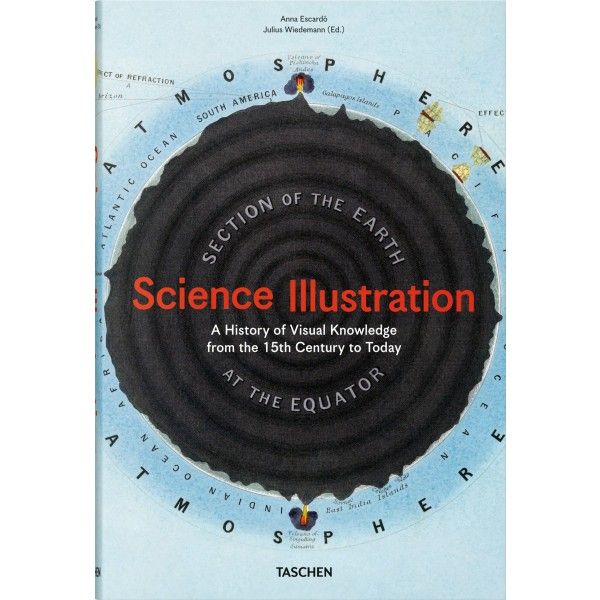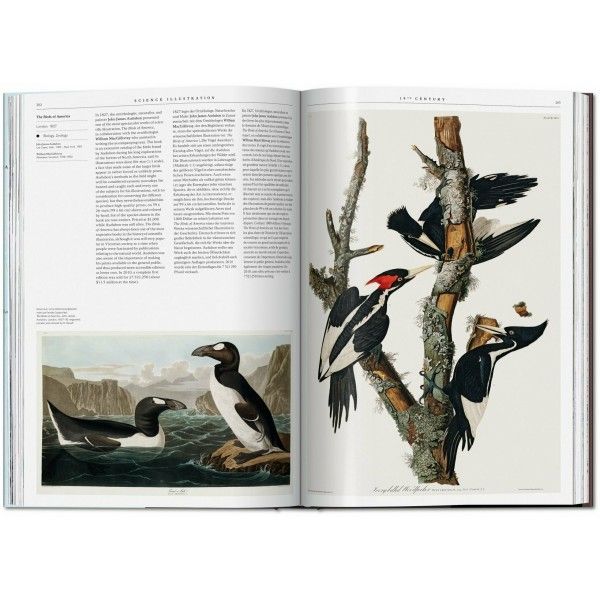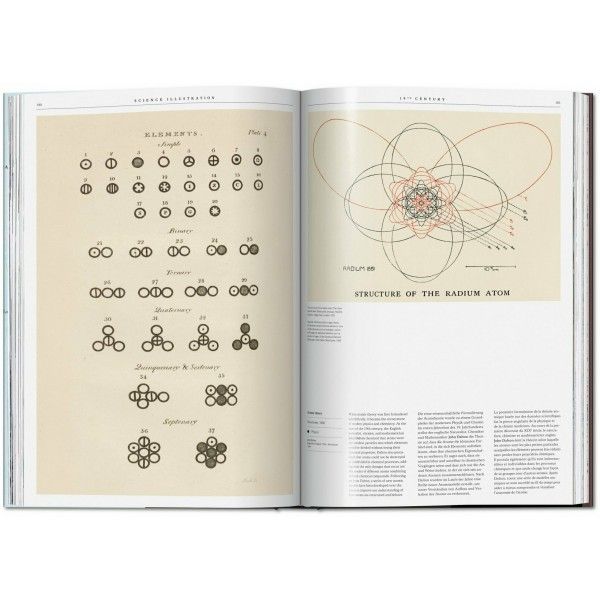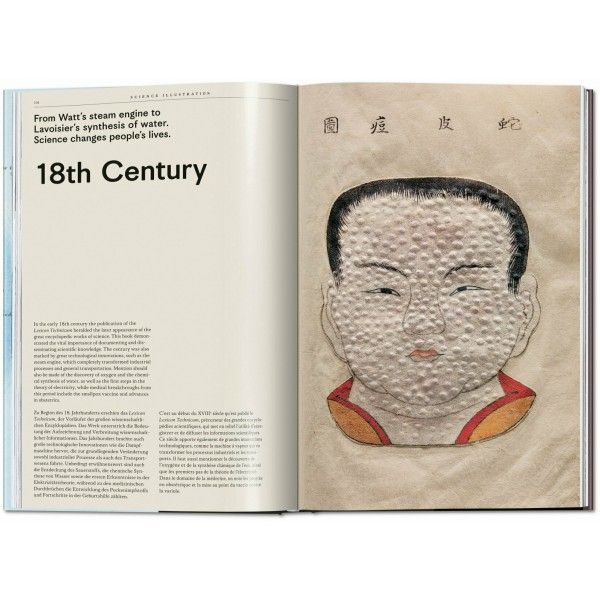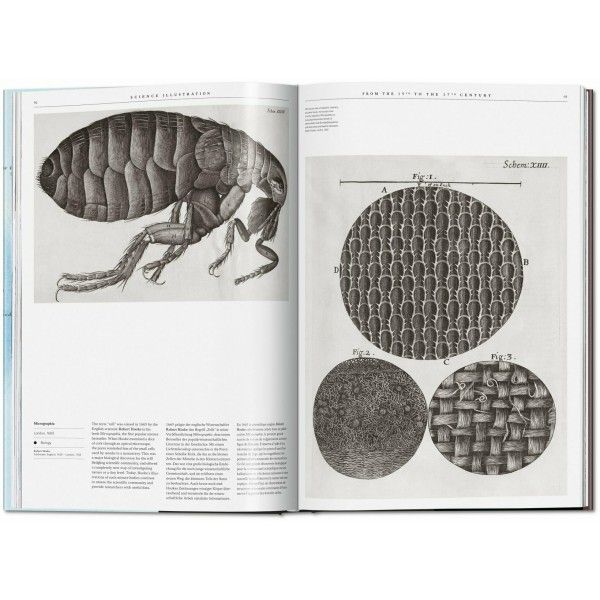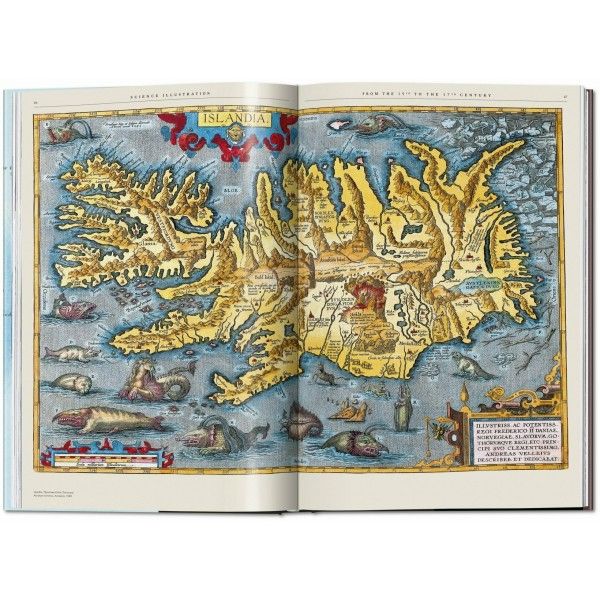Science Illustration
Anna Escardó, Julius Wiedemann (red.)
Gebonden
436 pagina's
246 x 372 mm
INT Engels, Frans, Duits
Gebonden
436 pagina's
246 x 372 mm
INT Engels, Frans, Duits
978-3-8365-7332-0
€ 60,00
Omschrijving
Science and illustration have always walked hand in hand, and not only the scientific community but the general public as well have used illustrated materials since early history to understand natural phenomena. Moreover, from Galileo to Einstein, our modern history has been written with the key support of art and all the insights it contributes.
The Western scientific revolution started in the 14th century and catapulted humankind into a completely new way of understanding how nature and the world around us behaved. From diseases caused by viruses to the vast galaxies of the cosmos, a new army of professionals turned their minds to starting to unlock and reshape the universe of our experience with a dialectic positioned between theory and evidence. The field of illustration and the development of knowledge became inseparably intertwined, as can be seen by the majestic works produced by both scientists and artists who specialised in this combined field. Many discoveries in science take place as the result of counterintuitive thinking, and in order to convey this to others or to the general public a connection has to be made with the resources of collective knowledge. Bearing that in mind, this book presents a broad approach, with illustrations that range from original sketches to technical drawings, and meticulous and colourful hand illustrations to computer-generated images.
The scientific discoveries themselves cover the formal sciences (mathematics, statistics, logic and computer science), the natural sciences (biology, physics, geology, palaeontology and chemistry), together with various applied sciences (architecture, medicine and engineering). These are illustrated with numerous works by nameless and also well-known artists, such as Albrecht Dürer, who through his powers of observation is widely acknowledged as the founder of scientific illustration, establishing the discipline as an equal partner in the search for knowledge. At the other end of this artistic timescale is the Chinese paleoanthropologist Qiang Ji, who in 2018 illuminated some of humankind’s earliest history with his work on our ancestor, Homo longi.
This XL-sized book highlights more than 700 scientists and over 300 discoveries that have all changed the course of history. From Andreas Vesalius to Charles Darwin and Marie Curie, the most important works of these pioneering men and women are described in detailed texts explaining their scientific contributions. The introduction to each of the book’s chapters features in-depth biographies of the main characters from each period, such as Albert Einstein, Alan Turing, and Rosalind Franklin. Beyond this, the book also includes Galileo’s watercolours of the moon, the first drawing of the heliocentric model of the universe by Nicolaus Copernicus, and Ada Lovelace’s drawing of the first programmable calculator, the forerunner of today’s computers.
The Western scientific revolution started in the 14th century and catapulted humankind into a completely new way of understanding how nature and the world around us behaved. From diseases caused by viruses to the vast galaxies of the cosmos, a new army of professionals turned their minds to starting to unlock and reshape the universe of our experience with a dialectic positioned between theory and evidence. The field of illustration and the development of knowledge became inseparably intertwined, as can be seen by the majestic works produced by both scientists and artists who specialised in this combined field. Many discoveries in science take place as the result of counterintuitive thinking, and in order to convey this to others or to the general public a connection has to be made with the resources of collective knowledge. Bearing that in mind, this book presents a broad approach, with illustrations that range from original sketches to technical drawings, and meticulous and colourful hand illustrations to computer-generated images.
The scientific discoveries themselves cover the formal sciences (mathematics, statistics, logic and computer science), the natural sciences (biology, physics, geology, palaeontology and chemistry), together with various applied sciences (architecture, medicine and engineering). These are illustrated with numerous works by nameless and also well-known artists, such as Albrecht Dürer, who through his powers of observation is widely acknowledged as the founder of scientific illustration, establishing the discipline as an equal partner in the search for knowledge. At the other end of this artistic timescale is the Chinese paleoanthropologist Qiang Ji, who in 2018 illuminated some of humankind’s earliest history with his work on our ancestor, Homo longi.
This XL-sized book highlights more than 700 scientists and over 300 discoveries that have all changed the course of history. From Andreas Vesalius to Charles Darwin and Marie Curie, the most important works of these pioneering men and women are described in detailed texts explaining their scientific contributions. The introduction to each of the book’s chapters features in-depth biographies of the main characters from each period, such as Albert Einstein, Alan Turing, and Rosalind Franklin. Beyond this, the book also includes Galileo’s watercolours of the moon, the first drawing of the heliocentric model of the universe by Nicolaus Copernicus, and Ada Lovelace’s drawing of the first programmable calculator, the forerunner of today’s computers.

